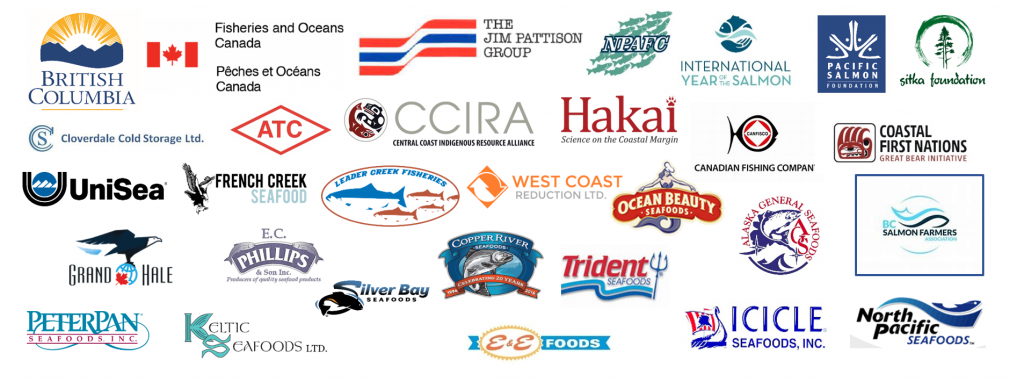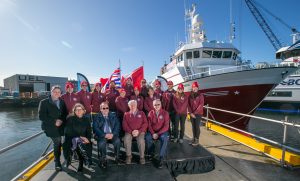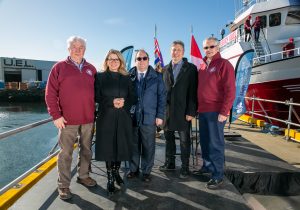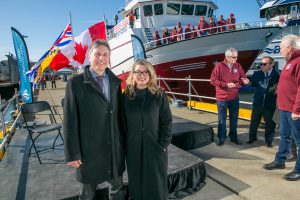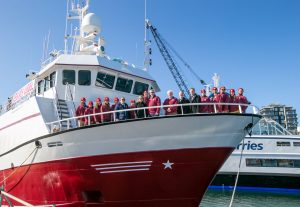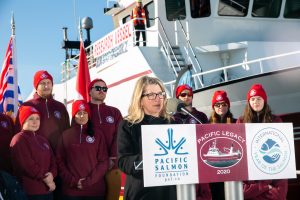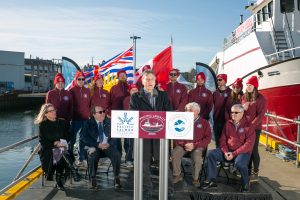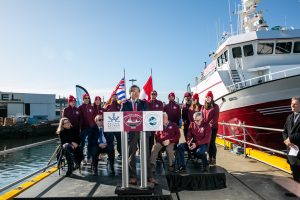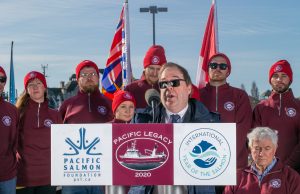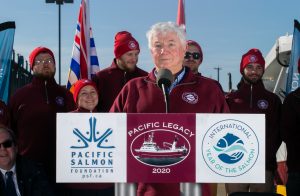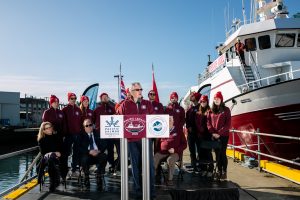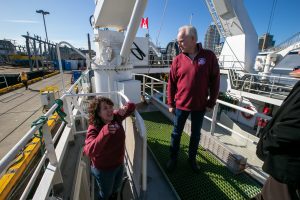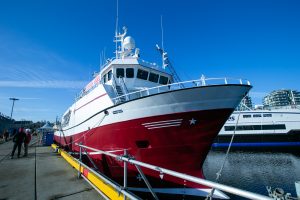2020 Gulf of Alaska Expedition
A second research expedition to study the winter ecology of salmon in the Gulf of Alaska
Researchers continued their study on the winter ecology of Pacific salmon by returning to the Gulf for a second international High Seas Expedition!
Overview
It is believed believed that the ‘readiness’ of juvenile salmon to survive winters in the Gulf of Alaska may be determined during the first months at sea. On March 11, 2020 Chartered Canadian fishing vessel Pacific Legacy set sail for the high-seas region of the Gulf of Alaska for one month to study the winter ecology of salmon and test this hypothesis.
This research built off the first 2019 International Gulf of Alaska Expedition. The study is a continuation of the international scientific effort to identify mechanisms and environmental factors that could determine the annual abundance and condition of Pacific salmonids in the Gulf of Alaska. It also sought to establish greater international research capacity for understanding the consequences of future environmental conditions and is being used to study the impacts of extreme climate events and ocean conditions.
The expedition team consists of 12 scientists from Pacific salmon producing countries and a highly experienced crew.
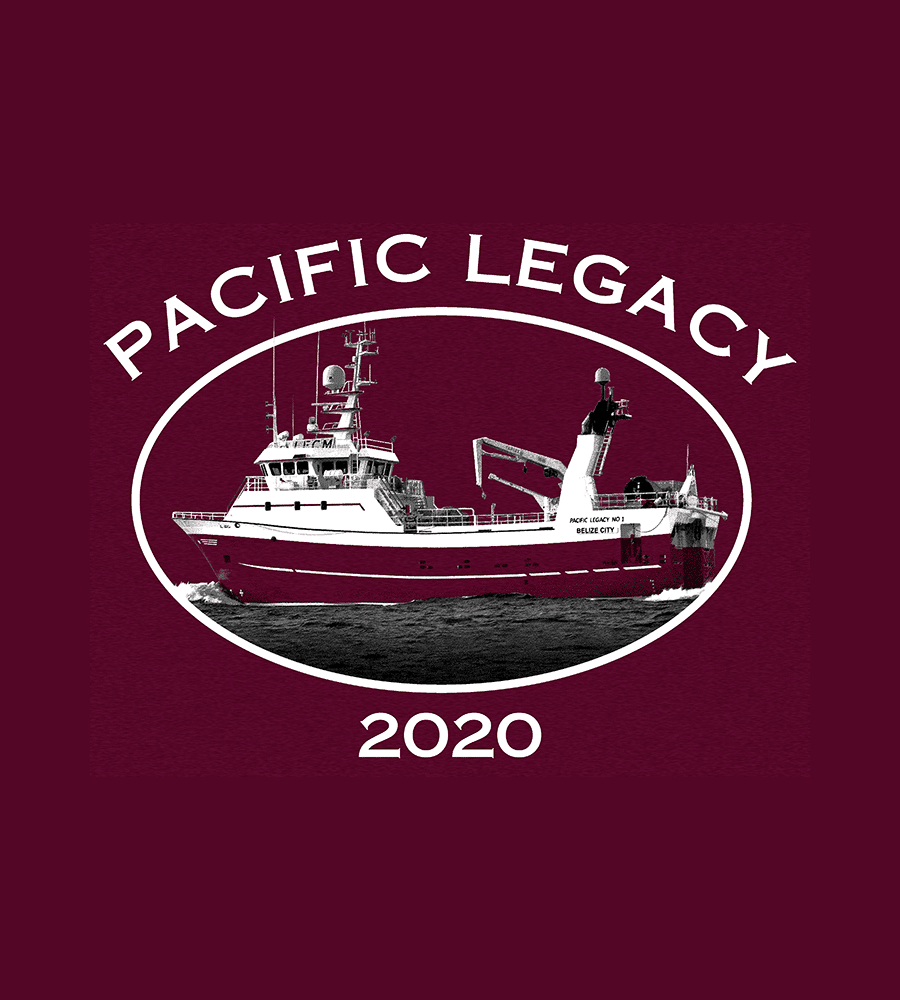
2020 Gulf of Alaska Expedition Cruise Report
The Scientific Team
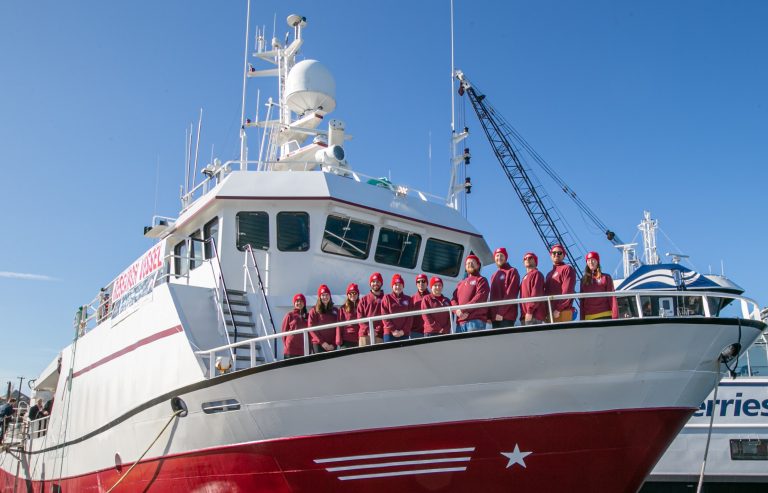
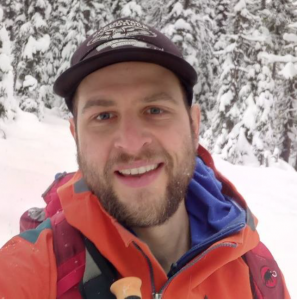 Christoph Deeg is first and foremost a biologist, with a background reflecting a broad interest in all “living” things. He started his research career in Germany and made contributions to a diverse number of fields including genetics and genomics of microorganisms and animals, fisheries research in the North Atlantic and North Sea, immunology of the innate immune system, conservation biology of salmon stocks and habitat on the central British Columbia coast, virology on the interactions of influenza with the innate immune system, and environmental microbiology. His PhD research at the University of British Columbia explored parasitic interactions in aquatic microorganisms, from giant viruses to predatory bacteria that form the base of the food web. Being a passionate outdoor enthusiast, he was able to take several field trips around British Columbia as well as the Caribbean to collect samples. After graduating, he decided to apply his broad skillset in organismal, molecular, and computational approaches with his passion for fieldwork to the management and conservation of Pacific salmon, a topic that he felt strongly about since moving to British Columbia. Christoph considers that having the opportunity to kick-start work in this field by joining the International Year of the Salmon Signature Expedition to the Gulf of Alaska alongside global leaders in salmon research is both a huge opportunity and an honour, and one that he is very much looking forward too!
Christoph Deeg is first and foremost a biologist, with a background reflecting a broad interest in all “living” things. He started his research career in Germany and made contributions to a diverse number of fields including genetics and genomics of microorganisms and animals, fisheries research in the North Atlantic and North Sea, immunology of the innate immune system, conservation biology of salmon stocks and habitat on the central British Columbia coast, virology on the interactions of influenza with the innate immune system, and environmental microbiology. His PhD research at the University of British Columbia explored parasitic interactions in aquatic microorganisms, from giant viruses to predatory bacteria that form the base of the food web. Being a passionate outdoor enthusiast, he was able to take several field trips around British Columbia as well as the Caribbean to collect samples. After graduating, he decided to apply his broad skillset in organismal, molecular, and computational approaches with his passion for fieldwork to the management and conservation of Pacific salmon, a topic that he felt strongly about since moving to British Columbia. Christoph considers that having the opportunity to kick-start work in this field by joining the International Year of the Salmon Signature Expedition to the Gulf of Alaska alongside global leaders in salmon research is both a huge opportunity and an honour, and one that he is very much looking forward too!
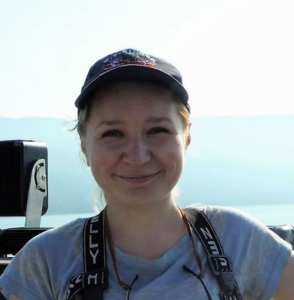 Svetlana Esenkulova is a marine biologist studying plankton and how it affects Pacific salmon. She has worked on projects at the Pacific Biological Station and with the Pacific Salmon Foundation associated with a five year study of Pacific salmon in the Strait of Georgia and Puget Sound. Svetlana has a number of interests and will be helping Chrys Neville with the sampling of salmon and the communications for the expedition. She will be collecting an “Expedition DNA sample” that will be used to ensure that there is a standard DNA sample for all salmon. She will also help to provide a focus on squid. Squid is an important component of salmon diet and it is especially important to Pacific salmon in the Gulf of Alaska. There are studies that indicate a relationship between the carrying capacity of the Gulf of Alaska for salmon species and squid abundance. However, despite its importance, very little is known about squid in the Gulf of Alaska. She hopes that results will offer new information on squid biology and ecology. Svetlana is excited to be part of a study that will for the first time study the abundance, distribution, and health status of salmon in the winter period in the Gulf of Alaska. She says that it is pretty cool when the genetic analysis will tell us what country and even what river each fish came from. When this is combined with an abundance estimate, there will be stock specific abundance estimates for the first time in the Gulf of Alaska. Svetlana looks forward to knowledge and experience exchange with researchers from five counties. She speaks English and Russian and is happy to help with communications. Svetlana believes that multicultural crews are more creative and hopes the team will be particularly effective due to the diversity and shared common goals. This survey is the first of its kind and from her personal point of view; results could be ground breaking. One of the practical results of this survey will be an improved assessment of salmon returns. And of course there will be new knowledge accrued that can advance salmon research in general and redefine how high seas studies are done. Svetlana is very honoured and grateful to be a part of what she considers to be an historic expedition.
Svetlana Esenkulova is a marine biologist studying plankton and how it affects Pacific salmon. She has worked on projects at the Pacific Biological Station and with the Pacific Salmon Foundation associated with a five year study of Pacific salmon in the Strait of Georgia and Puget Sound. Svetlana has a number of interests and will be helping Chrys Neville with the sampling of salmon and the communications for the expedition. She will be collecting an “Expedition DNA sample” that will be used to ensure that there is a standard DNA sample for all salmon. She will also help to provide a focus on squid. Squid is an important component of salmon diet and it is especially important to Pacific salmon in the Gulf of Alaska. There are studies that indicate a relationship between the carrying capacity of the Gulf of Alaska for salmon species and squid abundance. However, despite its importance, very little is known about squid in the Gulf of Alaska. She hopes that results will offer new information on squid biology and ecology. Svetlana is excited to be part of a study that will for the first time study the abundance, distribution, and health status of salmon in the winter period in the Gulf of Alaska. She says that it is pretty cool when the genetic analysis will tell us what country and even what river each fish came from. When this is combined with an abundance estimate, there will be stock specific abundance estimates for the first time in the Gulf of Alaska. Svetlana looks forward to knowledge and experience exchange with researchers from five counties. She speaks English and Russian and is happy to help with communications. Svetlana believes that multicultural crews are more creative and hopes the team will be particularly effective due to the diversity and shared common goals. This survey is the first of its kind and from her personal point of view; results could be ground breaking. One of the practical results of this survey will be an improved assessment of salmon returns. And of course there will be new knowledge accrued that can advance salmon research in general and redefine how high seas studies are done. Svetlana is very honoured and grateful to be a part of what she considers to be an historic expedition.
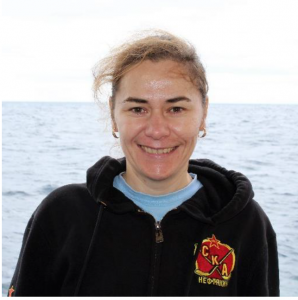
Albina Kanzsparova graduated from Perm University with a specialisation in ichthyology and then moved to the eastern part of Russia to study Pacific salmon. From 2005 to 2015, she worked as a research fellow in TINRO, Khabarovsk city branch where she studied the freshwater life of pink and chum salmon in the Amur River and rivers on the North Coast of Okhotsk Sea and the Shantar Islands region. The Amur River is three times the size of Columbia River and is comparable to Yukon River which is why her work experience obtained on Amur is so unique.
Historic Chum catches in 1910 were 93 metric ton. In 2016 it was 42 metric ton. It was part of her work to understand how fishing affects the production of chum salmon in the Amur River. Her work with the commercial salmon fisheries during spawning migration was tracking migration, biological analysis, and determining the catch per effort. After the spawning migration, she counted the spawned out salmon on foot and used all of the data collected to estimate the production of juveniles that would rear in the North East part of Okhotsk Sea.
Since 2016, Albina worked in TINRO in Vladivostok in the fish stocks forecasting branch. In 2016 she participated in the project “Wild and Hatchery Salmon” in Prince Williams Sound, Alaska where she gathered samples for DNA analysis and otoliths from pink salmon. “Working there was fun as we had a very friendly team” recalled Albina. Since 2017, Albina has participated in the annual TINRO trawl surveys which will be similar to the survey in the Gulf of Alaska. In summer, they estimate pink returns in the Pacific Ocean, close to Kuril Islands and Okhotsk Sea and in the fall – juvenile migration from Okhotsk Sea to Pacific. This is 24 hour work with a pelagic trawl, sorting of the catches and collecting samples. All of the information is used for catch forecasting of pink salmon in Okhotsk Sea basin. Albina sees her participation in the Gulf of Alaska expedition as a novel investigation phase in her career. She thinks that the Gulf of Alaska and Russian Far East are not separated by the Pacific Ocean but unified by the Pacific Ocean. Because of that, she wants to see how salmon stocks are formed in both sides of the ocean, what are the processes that define the stocks, what factors are common and what are region specific. Russia reached salmon catches of 0.5 mi metric ton in 21st Century. As a biologist, Albina would like to understand what factors lead to higher returns and what can be done to maintain this high salmon productivity of the ocean.

Aleksei Somov, is an ecologist, studying pelagic communities at TINRO, in Vladivostok. He finished a postgraduate degree last year and is currently working on a Candidate Dissertation. The topic of his research is nekton composition, structure, and dynamics in epipelagic region of the East Bering Sea. The fish stocks found in Eastern region of the Bering Sea have significant impotence to Russian commercial fisheries. This region is a major feeding area for commercially important species including walleye pollock, herring, halibut, Pacific cod and of course, salmon. In the open waters, in the summer-fall period, there are substantial numbers of salmon feeding prior to their spawning migration. Aleksei’s goal is to find seasonal, annual and spatial patterns of epipelagic communities and connect the patterns to climate and oceanographic changes on the regional and on the global scale. To reach this goal he expects to analyze vast amounts of data collected during annual TINRO surveys since 2000 and available climatic data, including satellite images. Because the study region is not an enclosed water body, all processes and changes in communities depend a lot on what is going on in adjacent areas. This is especially relevant for Pacific salmon, as local and non-local stocks in Russian waters of Bering Sea migrate south from Aleutian Islands to Gulf of Alaska for winter period and then migrate again to west part of the Bering Sea to spawn. The question about how critical the winter period is for salmon survival remains to be answered. This complex expedition in the Gulf of Alaska will become a big step in answering this question. As a young scientist Aleksei is very interested in sharing and learning field methods and expertise with international colleagues. Participating in this expedition is a wonderful opportunity to work shoulder to shoulder with colleagues from Canada, USA, Japan, and Korea on solving this important question.
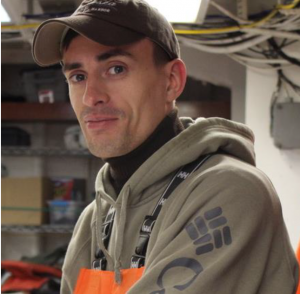
Igor Grigorov is a biologist who is interested in pelagic (and not only) fish species and the conditions in which they live. He works in the international Department of VNIRO (Moscow) At the moment he is working on a doctoral dissertation – the biology and distribution of Pacific skates in the Northern part of the Pacific Ocean.
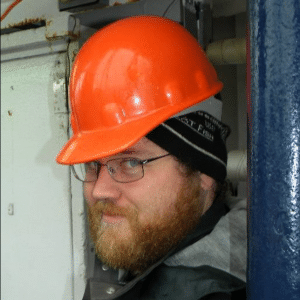 Wesley Strasburger is a fisheries research biologist at the Alaska Fisheries Science Center, Auke Bay Labs in Juneau Alaska. He is also currently a PhD student at the University of Alaska College of Fisheries and Ocean Sciences. His previous work has primarily been focused on feeding ecology during early life history of Alaskan fishes, including groundfishes, Pacific salmon, and spiny dogfish sharks. He has served as the Chief Scientist on U.S. fisheries oceanography and ecosystem surveys in the Gulf of Alaska, Bering Sea, and Chukchi Seas over the past 6 years. His PhD work is focused on the early life history ecology, growth, and subsequent recruitment of juvenile sablefish in the Gulf of Alaska.
Wesley Strasburger is a fisheries research biologist at the Alaska Fisheries Science Center, Auke Bay Labs in Juneau Alaska. He is also currently a PhD student at the University of Alaska College of Fisheries and Ocean Sciences. His previous work has primarily been focused on feeding ecology during early life history of Alaskan fishes, including groundfishes, Pacific salmon, and spiny dogfish sharks. He has served as the Chief Scientist on U.S. fisheries oceanography and ecosystem surveys in the Gulf of Alaska, Bering Sea, and Chukchi Seas over the past 6 years. His PhD work is focused on the early life history ecology, growth, and subsequent recruitment of juvenile sablefish in the Gulf of Alaska.
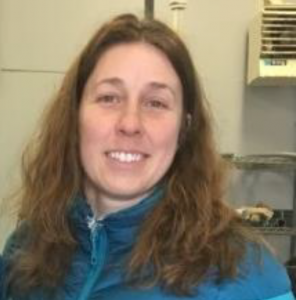 Kristin Cieciel is a fisheries research biologist with the NOAA Alaska Fisheries Science Center in Juneau Alaska. She has provided research support and survey logistics for trawl-based marine surveys on forage fish in the Bering Sea and Gulf of Alaska for over 17 years and works mostly on research involving the abundance and ecology of juvenile salmon and jellyfish in the North Bering and Chukchi Sea.
Kristin Cieciel is a fisheries research biologist with the NOAA Alaska Fisheries Science Center in Juneau Alaska. She has provided research support and survey logistics for trawl-based marine surveys on forage fish in the Bering Sea and Gulf of Alaska for over 17 years and works mostly on research involving the abundance and ecology of juvenile salmon and jellyfish in the North Bering and Chukchi Sea.
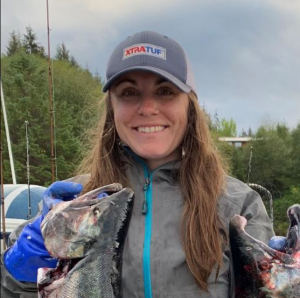 Tessa Minicucci is the Research and Evaluation Manager at Southern Southeast Regional Aquaculture Association (SSRAA) in Ketchikan, Alaska. Tessa serves as the biologist for SSRAA and oversees the return of millions of Chinook, coho, and chum salmon to numerous release sites throughout southern Southeast Alaska. Her work focuses on evaluating hatchery and wild salmon contributions to common property fisheries in the region to maximize survival and harvest of hatchery fish. Tessa received her M.S. from UAF where her thesis focused how interactions in the Bering Sea between western Alaska chum salmon and Asian pink and chum salmon affect chum salmon growth, age, and maturation. As a participant on the 2020 International Year of the Salmon survey, Tessa hopes to learn more about chum salmon growth rates and marine survival during their first year at sea to better forecast salmon returns and age-class compositions of salmon returning to Southeast Alaska in a changing marine environment.
Tessa Minicucci is the Research and Evaluation Manager at Southern Southeast Regional Aquaculture Association (SSRAA) in Ketchikan, Alaska. Tessa serves as the biologist for SSRAA and oversees the return of millions of Chinook, coho, and chum salmon to numerous release sites throughout southern Southeast Alaska. Her work focuses on evaluating hatchery and wild salmon contributions to common property fisheries in the region to maximize survival and harvest of hatchery fish. Tessa received her M.S. from UAF where her thesis focused how interactions in the Bering Sea between western Alaska chum salmon and Asian pink and chum salmon affect chum salmon growth, age, and maturation. As a participant on the 2020 International Year of the Salmon survey, Tessa hopes to learn more about chum salmon growth rates and marine survival during their first year at sea to better forecast salmon returns and age-class compositions of salmon returning to Southeast Alaska in a changing marine environment.
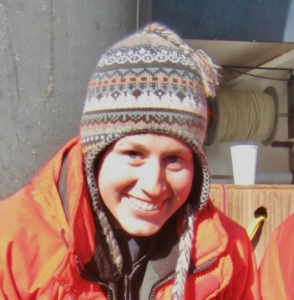 Stacy Vega is a research biologist with the State of Alaska’s Department of Fish and Game, Commercial Fisheries Division. During her Master’s work at the University of Alaska, Fairbanks, she took part in surveys aimed at understanding early life history characteristics, including migration timing and growth rates, of juvenile salmon in the northern Bering and Chukchi seas. She is currently the assistant area biologist for Bristol Bay salmon and herring fisheries which includes leading multiple stock assessment projects in order to assist inseason management, as well as analyzing catch, escapement, and total run data to forecast the largest sockeye salmon fishery in the world.
Stacy Vega is a research biologist with the State of Alaska’s Department of Fish and Game, Commercial Fisheries Division. During her Master’s work at the University of Alaska, Fairbanks, she took part in surveys aimed at understanding early life history characteristics, including migration timing and growth rates, of juvenile salmon in the northern Bering and Chukchi seas. She is currently the assistant area biologist for Bristol Bay salmon and herring fisheries which includes leading multiple stock assessment projects in order to assist inseason management, as well as analyzing catch, escapement, and total run data to forecast the largest sockeye salmon fishery in the world.
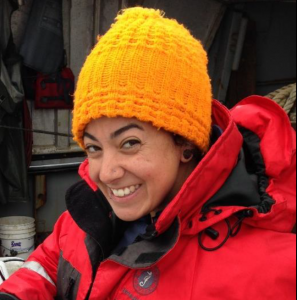 Sabrina Garcia is a research biologist with the State of Alaska’s Department of Fish and Game based in Anchorage. Her work focuses primarily on the early marine ecology (abundance, distribution, and diet) of western Alaska juvenile Chinook salmon in the Bering Sea in collaboration with the National Oceanic and Atmospheric Administration. She also leads surveys in the southern Bering Sea to determine the migration timing of Kuskokwim and Bristol Bay stocks of juvenile Chinook salmon. Some of her new projects include forecasting adult runs of Yukon River fall chum salmon, estimating the stock composition of immature Chinook salmon in the eastern Bering Sea, and identifying the migratory movements of salmon sharks in the Bering Sea ecosystem.
Sabrina Garcia is a research biologist with the State of Alaska’s Department of Fish and Game based in Anchorage. Her work focuses primarily on the early marine ecology (abundance, distribution, and diet) of western Alaska juvenile Chinook salmon in the Bering Sea in collaboration with the National Oceanic and Atmospheric Administration. She also leads surveys in the southern Bering Sea to determine the migration timing of Kuskokwim and Bristol Bay stocks of juvenile Chinook salmon. Some of her new projects include forecasting adult runs of Yukon River fall chum salmon, estimating the stock composition of immature Chinook salmon in the eastern Bering Sea, and identifying the migratory movements of salmon sharks in the Bering Sea ecosystem.
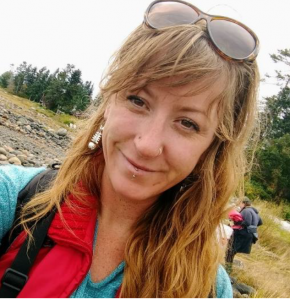 Rebecca is a fisheries technician with the South Coast Stock Assessment Division of the Department of Fisheries and Oceans Canada, in Nanaimo, B.C. Her field work for the department has included swimming rivers counting salmon, sampling Chinook for the West Coast Vancouver Island Chinook Run Reconstruction Project, supporting juvenile salmonid studies in the Salish Sea, and working with local anglers to collect and manage data of recreational fishing catches.
Rebecca is a fisheries technician with the South Coast Stock Assessment Division of the Department of Fisheries and Oceans Canada, in Nanaimo, B.C. Her field work for the department has included swimming rivers counting salmon, sampling Chinook for the West Coast Vancouver Island Chinook Run Reconstruction Project, supporting juvenile salmonid studies in the Salish Sea, and working with local anglers to collect and manage data of recreational fishing catches.
Originally hailing from the Ottawa area, Rebecca moved in 2004 to Vancouver Island, whose beauty and ecological diversity immediately captured her heart. Her pre-DFO career included a carpentry apprenticeship that took her all over Western Canada into the Yukon and northern Saskatchewan, to coastal islands and more recently to Cadiz, Spain. Her academic studies — anthropology and resource management — led to adventures such as ethnographical research in Macedonia and ecological monitoring on Mitlenatch Island Nature Provincial Park in the Salish Sea.
Rebecca attributes the years of witnessing the destructive systems of resource extraction and the associated environmental decimation while working in the trades to her decision to dedicate her life to studying and conserving the precious environment. She is now an avid volunteer and enjoys organizing dump site clean-ups, supporting conservation and environmental education projects both with DFO and communities around Vancouver Island. Rebecca’s passion for understanding and nurturing the environment extends beyond the aquatic world to the trees, skies and coastal shorelines where she studies birds whenever she has the chance. She loves to devote some of her (extremely early) mornings to the Vancouver Island Banding Station collecting important data on the health and survivorship of birds.
When Rebecca is not studying fish and birds or travelling the world, she enjoys sailing with her partner, scuba diving with her family in the Cayman Islands, camping, and dreaming of her next adventure. She plans to continue with her career in the sciences and purse studies in environmental anthropology looking at the intricate and ever-changing relationship of humans and their environment.
She’s ecstatic to be a part of the GoA Expedition and to be working with — and learning from — an international dream team of scientists. Go team!
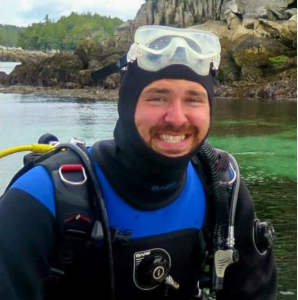 Hailing from the small town of Rock Creek British Colombia, Tristan has followed his love of sharks and SCUBA diving to the Central Coast. Joining the Central Coast Indigenous Resource Alliance in 2015, Tristan supports local resource management science and conducts dive research to learn more about Central Coast rockfish populations and inform the marine protected area network implementation. Recent trends in Central Coast salmon stocks led to Coastal First Nations contributing Tristan to join the Gulf of Alaska 2020 cruise to increase our understanding of salmon life while out at sea, and collaborate with the other GoA 2020 participants on potential actions to aid salmon going forward.
Hailing from the small town of Rock Creek British Colombia, Tristan has followed his love of sharks and SCUBA diving to the Central Coast. Joining the Central Coast Indigenous Resource Alliance in 2015, Tristan supports local resource management science and conducts dive research to learn more about Central Coast rockfish populations and inform the marine protected area network implementation. Recent trends in Central Coast salmon stocks led to Coastal First Nations contributing Tristan to join the Gulf of Alaska 2020 cruise to increase our understanding of salmon life while out at sea, and collaborate with the other GoA 2020 participants on potential actions to aid salmon going forward.
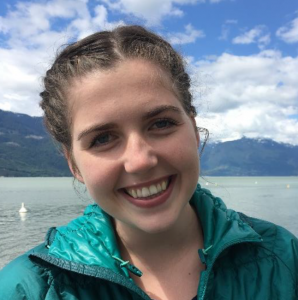 Natalie Mahara is a biological oceanographer with a particular fondness for zooplankton. Since completing her MSc on coastal zooplankton composition in British Columbia several years ago, she has been working to establish a baseline of microplastic concentrations in nearshore food webs in B.C. She has been involved in other projects and field programs involving Fraser River Estuary zooplankton communities, juvenile salmon outmigration, zooplankton fatty acid analysis, and science outreach and communication. She is attending the Gulf of Alaska 2020 Expedition to collect oceanographic data in the North Pacific to add to our understanding of the physical characteristics and lower trophic level dynamics in the open ocean.
Natalie Mahara is a biological oceanographer with a particular fondness for zooplankton. Since completing her MSc on coastal zooplankton composition in British Columbia several years ago, she has been working to establish a baseline of microplastic concentrations in nearshore food webs in B.C. She has been involved in other projects and field programs involving Fraser River Estuary zooplankton communities, juvenile salmon outmigration, zooplankton fatty acid analysis, and science outreach and communication. She is attending the Gulf of Alaska 2020 Expedition to collect oceanographic data in the North Pacific to add to our understanding of the physical characteristics and lower trophic level dynamics in the open ocean.
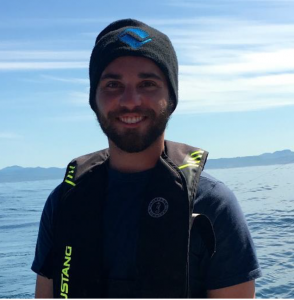 I am a PhD candidate at the University of British Columbia in the Pelagic Ecosystems Lab under Dr. Brian Hunt. I am marine scientist with an interest in trophic ecology, biochemical tracers, and the impacts of climate change on marine food webs. My PhD research investigates stock-specific Chinook salmon marine trophic ecology off the BC Coast utilizing bulk/compound specific stable isotope analysis. I aim to investigate both this and Chinook habitat-use with the aim to connect these analyses with regional food web dynamics and climate change. I am also interested in using these tools to examine the quality of Chinook salmon as prey for threatened resident killer whale populations.
I am a PhD candidate at the University of British Columbia in the Pelagic Ecosystems Lab under Dr. Brian Hunt. I am marine scientist with an interest in trophic ecology, biochemical tracers, and the impacts of climate change on marine food webs. My PhD research investigates stock-specific Chinook salmon marine trophic ecology off the BC Coast utilizing bulk/compound specific stable isotope analysis. I aim to investigate both this and Chinook habitat-use with the aim to connect these analyses with regional food web dynamics and climate change. I am also interested in using these tools to examine the quality of Chinook salmon as prey for threatened resident killer whale populations.
2020 Gulf of Alaska Trawl Net
A special trawl net was built specifically for the Gulf of Alaska Expedition using funding from the DFO and Province of BC Salmon and Restoration Innovation Fund (BC-SRIF). Part of the scientific methodology is ensuring comparable results across expeditions. The net has a mouth opening of 24.9 Fathoms horizontally and 16.4 Fathoms vertically, and was custom built to replicate as closely as possible the configuration of the Russian net used during the 2019 Expedition on the Professor Kaganovskiy, and the net that will be used by the United States during the proposed 2021 Pan-Pacific High Seas Expedition. Scientists from Russia, Canada and the United States collaborated with Brian Mose from the Pacific Legacy on the development of the new net built by LSF Inc. in Seattle, WA. It is planned to use the net on the Canadian Coast Guard research vessel the R/V Franklin during the 2021 survey.
Why the Gulf of Alaska during Winter?
Chief organizers of the 2020 Gulf of Alaska Expedition, Dr. Richard Beamish and Dr. Brian Riddell, suggest that fish that grow faster survive better. It is believed that the ‘readiness’ of juvenile salmon to survive winters in the Gulf of Alaska may be determined during the first months at sea. The stocks of origin of salmon that we encounter and identify using DNA and health data (energy, content, pathogens etc.) will increase our knowledge of this potentially critical period for survival and production of B.C. salmon. These discoveries will be the basis for forecasting and managing salmon populations in a rapidly changing environment.
Updates from the Ship
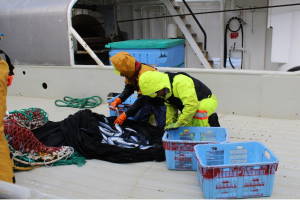
The Pacific Legacy, with her commercial fishing crew of eight and 12 scientists from Canada, Russia and the United States, left Victoria harbour on the evening of March 11, 2020. As of March 20 they have completed 17 sets. There were no salmon in the two sets within the Canadian EEZ. In the next 15 sets we have approximately 440 salmon which exceeds the total salmon catch of 417 in our 2019 expedition. We are catching all species except for Chinook salmon but including one steelhead. It was a rough start with high winds, but the science crew recovered quickly and are in good spirits once they got their sea legs.
Until more of the survey area has been sampled, it is early to interpret results or variation in catch patterns. However, a first impression is that the catch pattern and abundances are different from last year. It is possible that the low catches last year were an index of the exceptionally poor coast wide returns of most species. If the stock specific catches this year relate to the returns this fall, it may show that these surveys can provide an early warning of return abundances. Our catches so far also contain excellent samples of chum, pink, coho and sockeye that will allow participants to test their hypotheses about the mechanisms regulating salmon production.
In addition to fishing, a CTD and plankton set has been conducted at each station and water samples for environmental DNA have been collected. The vessel and crew are scheduled to continue fishing the SW portion of the survey grid over the next few days. Following this they will be headed to Prince Rupert for fuel on March 24. Due to current conditions with the coronavirus, there will be no crew changes in Prince Rupert and the science team on board will continue for the duration of the expedition. Everyone is appreciative of the exceptional abilities of the crew of eight and the support of Brian Mose who is an owner of the vessel and can get anything done.
Where is the Vessel now?
Vessel Route
We receive the vessel’s coordinates daily. This map shows the vessel’s progress to date – April 7, 2020 (arrival)
Note: each feather on the arrow is 10 knots of wind
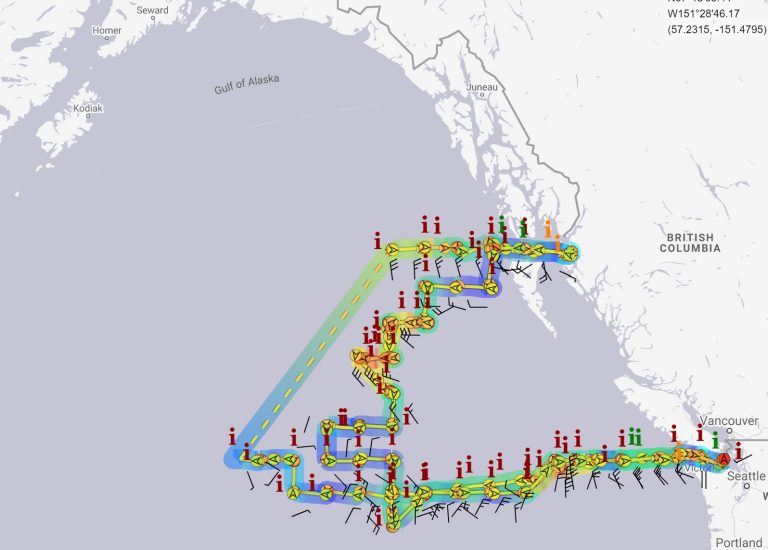
Launch of the 2020 Expedition
Thank you to our sponsors!
